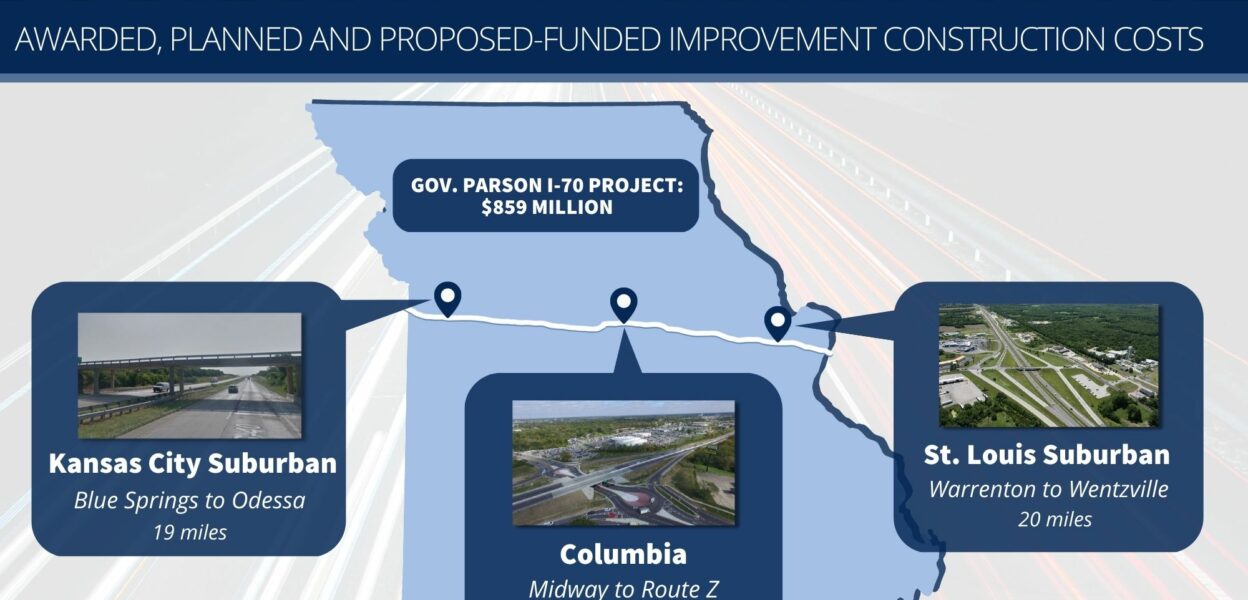My, my how times have changed. In 2015 fresh off the heels of the proposed sales tax increase for transportation (mostly for highways) going down in flames in August of 2014, MoDOT came up with the Missouri 325 plan. It was an austerity plan based on only $325M in state funding for road construction. Many hands were rung at the prospect that the state might not have enough funding to match the potential amount it could get from the Federal government. Since then in 2018 a gas tax increase put before voters also went down in flames. For a few years it appeared the state’s addiction to road building might be held in check. Perhaps we could discuss whether the state’s bloated and insolvent road network needed reform.
In 2019 though a $100M driving subsidy was proposed to help close the gap with general revenue funds. In the end the Missouri Legislature passed $50M. In 2020 the Missouri Legislature passed and Governor Parson signed a 12.5 cent gas tax increase, phased in over five years. When fully phased in, it would raise about $500M annually. It was criticized as being the largest tax increase in Missouri history. The phase in kept it under the threshold of the Hancock amendment, so it didn’t have to go before voters. Then Congress passed the President’s infrastructure bill adding more potential funds. You might think all that would be the fix even the most strung out road-building addict was jonesing for, but then …
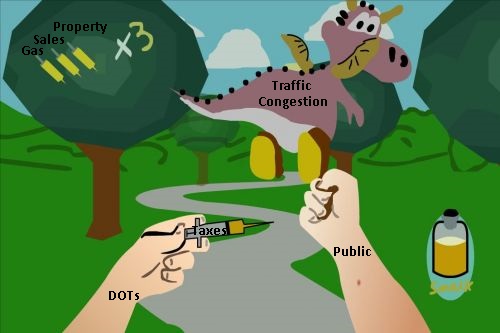
At Governor Parson’s State of the State address on Jan 18th, he proposed a plan to subsidize driving with $859M in general revenue funds to rebuild and add a third lane in each direction to I-70 in three segments totaling 52 miles.
For years, congestion, traffic accidents, and delays have become serious issues for commuters on I-70. Not only are we concerned for motorist safety, these inefficiencies are costly to our state’s economy,” Governor Parson said. “To those who say we can’t afford it, I say we can’t afford not to. This is a once in a lifetime opportunity, and the time is now.
Gov. Parson 2023 State of the State Address
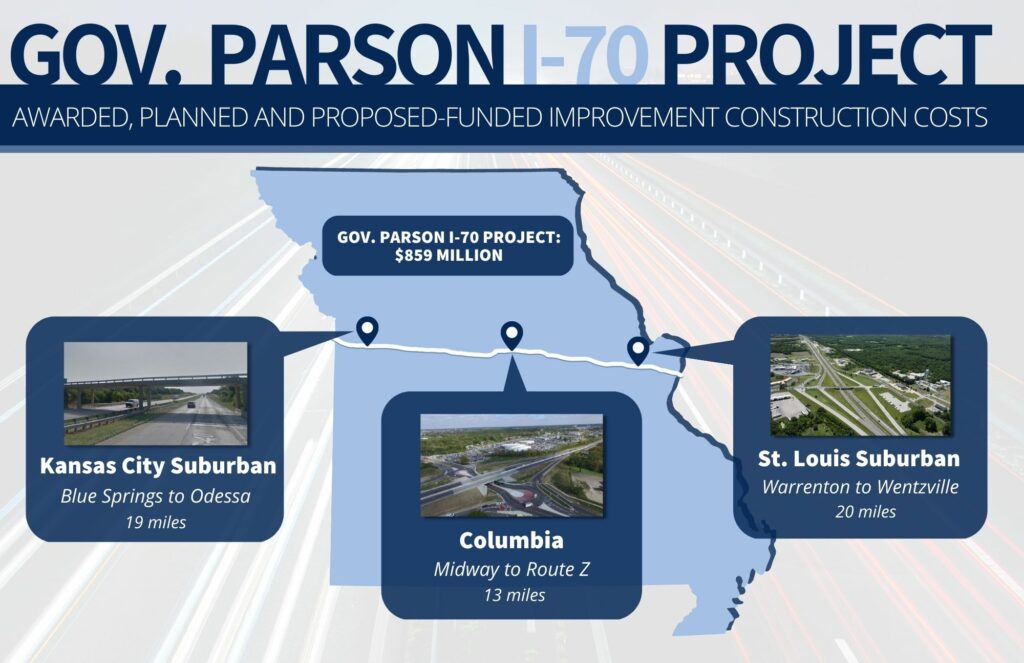
The Governor is stuck on a mid-20th century economic model wherein connecting cities via interstates provides big economic returns. Connecting STL and KC and points between and beyond had a high return on investment, but there are demising returns to scale. What we’ve seen lately is that added highway capacity mostly spreads out places enabling longer commutes. These spread out places don’t have enough economic activity to cover the long term costs of the infrastructure serving them. Doubly bad is the extra driving to accomplish the same things sends more wealth out of the state via the fuel consumed.
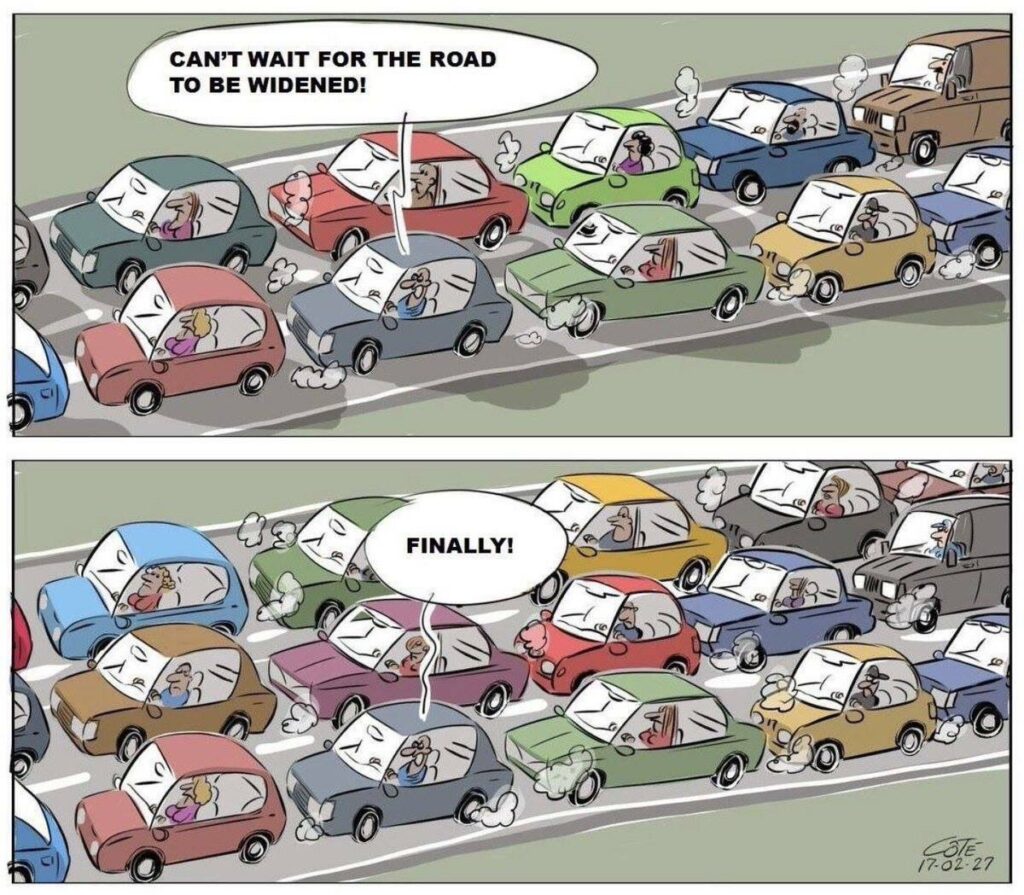
The Governor cites congestion as a motivator. We’ve seen time and again that adding capacity mainly induces demand. It’s the “one more lane will fix it” mind set. Combating congestion could be accomplished by better pricing the use of the highway. Right now it’s like a Soviet bread line, or perhaps a more contemporary analogy would be the line outside Ben and Jerry’s on their free ice cream day. In 2014 MoDOT studied tolling I-70 from Wentzville to Independence to pay for the estimated $2B ($2.5B in today’s dollars) cost to redo I-70.
Based on the current traffic, it is likely that a trip across the state on I-70 would cost $20-$30 per car ($40-$90 for trucks) to generate enough funds to pay for the $2 billion project.
Tolling Options for I-70,Independence to Wentzville
Let’s compare the $30 toll to the amount of gas taxes paid to traverse the same route. $30/200 miles = 15 cents a mile. 200 miles/ 20 mpg x $0.22 state fuel tax = $2.20 / 200 miles = 1.1 cents per mile. Ouch, amazing what the true cost is (well ignoring the cost to society of the negative externalities) and how underpriced driving is. No wonder the state is in such a financial hole.
Jeff Speck explains induced demand in this video.
The Governor cites safety as a motivator. As we’ve seen during the pandemic, wide open roads encouraged more reckless driving and more wrecks. Congestion actually helps safety, so if the widening leads to longer periods of low congestion, the highway will be less safe. What is actually safer is putting things closer together so places can be reached at slower speeds by car, avoiding a highway altogether, or better yet by other safer modes of transportation.
The Governor cites delays. The dollar value of time saved by a highway widening trope is trotted out in every highway proposal. As we’ve seen time and time again, that time saved is thrown away by spreading places out more.
The Governor cites the inefficiency of current conditions and its negative impact on the state’s economy as a motivator. What is inefficient is burdening the state with more infrastructure liabilities serving low productivity land uses. What is inefficient is moving people via car more often and longer distances to accomplish the same things. Both in terms of energy and dollars. The state’s endless coercion of driving is damaging the state’s economy. The wealth spent on fuel leaves the state. Luckily we have some auto manufacturing here, but still a lot of the money spent on vehicles leaves the state. The cost of it all crowds out spending on other life needs of which a higher proportion stays in the local economy. What would increase efficiency is increasing the number of trips Missourians could take by cheaper means. Then there’s the cost in lives and property from car crashes.
We’ll probably see something that looks like economic growth enabled by the highway widening on the outskirts of the STL and KC metros. If you draw a small circle around those areas, sure it’s growth. But mostly the “growth” comes at the expense of already existing places- build-abandon-build-abandon. What the state is doing is picking winners and losers.
The Governor cites the state’s flush coffers as a once in a lifetime opportunity to accomplish this. Given the climate crisis, the state’s flush coffers should be the opportunity to reduce Missourians’ dependence on driving.
The Governor’s proposal would use general revenue to pay for it. He proposed nothing for transit, intercity passenger rail or bus, freight rail (replace semis on the highway), airports, international air travel, etc. For the most part in the past at the state level at least (the Federal highway trust fund has been bailed out by general revenue for many years), highway spending has come from fuel taxes. That provided some feedback to drivers using the roads paying for them. This subsidy perturbs that feedback mechanism. Also out of state users of the highway will contribute nothing to this expenditure.
The need to redo I-70 has been long identified as a priority, yet the “big” gas tax increase going into effect isn’t enough to pay for it, nor all the other highway liabilities the state has amassed. We already knew that of course. The 21st Century Missouri Transportation System Task Force in 2018 concluded that the sate needed $825M (a billion in today’s dollars) in additional annual funding.
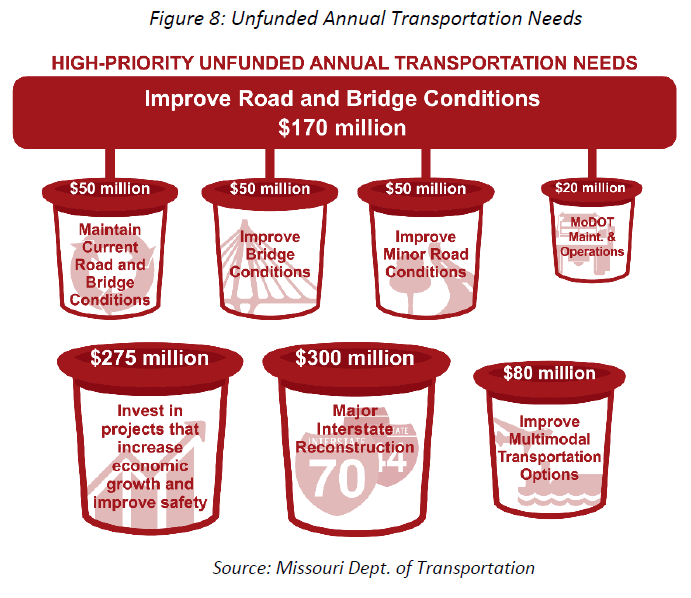
The financial shortfall is an indictment of the state’s irresponsibility to account for its liabilities. The maintenance and eventual rebuild of roads and bridges is quite predictable. Instead of putting money away to cover those liabilities over time, the state runs the system like an unfunded pension- making a promise to provide the benefit in perpetuity, but not having the money to back up the promise, meanwhile people become dependent. Imagine instead if with each new road, bridge, or widening, money had to be set aside, so when the bill comes due, there would be money there. The trouble is that would have meant higher taxes or less road building in the past. Well now we’re left holding the bag on a lot of liabilities previous generations have given us.
The Governor needs to get his head out of the past. Moving people and goods by the most expensive, dangerous, and environmentally damaging mode is exactly the wrong idea for our time. The use of general revenue that could go to other things (what might be the economic return of putting it into the state’s higher education system? How does that compare?) to subsidize driving is simply irresponsible.
Strong Towns discussed the proposal at length-
Prepare for the same old propaganda –
What we should be doing with this once in a lifetime opportunity-
